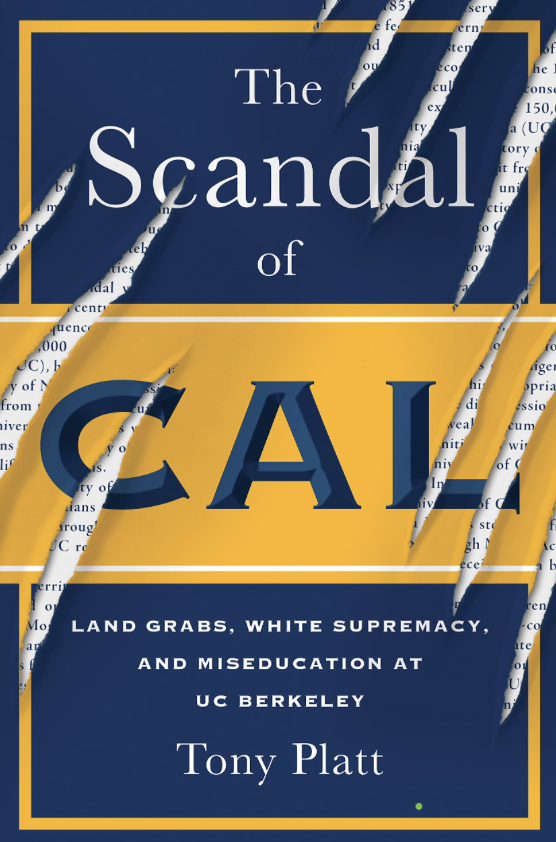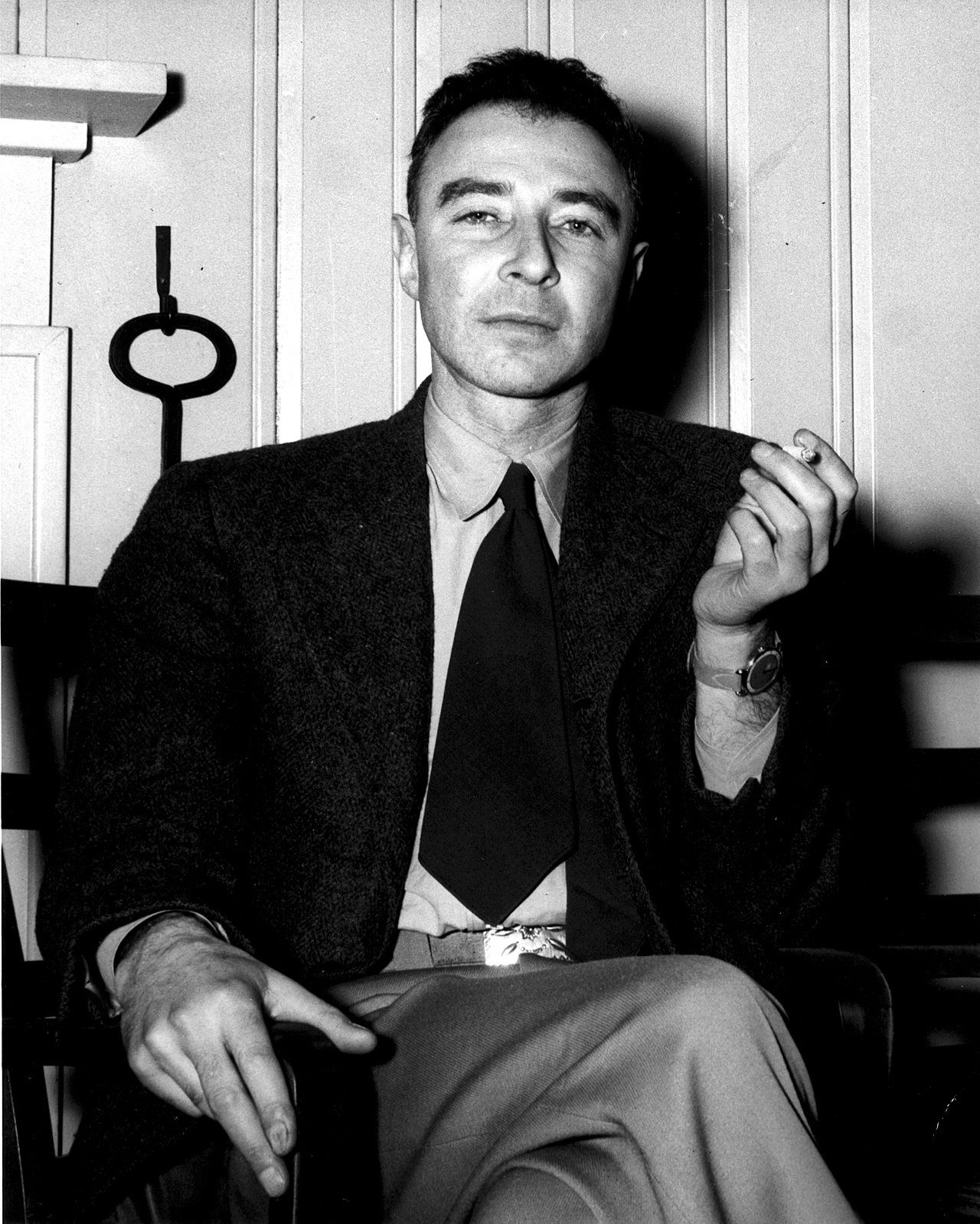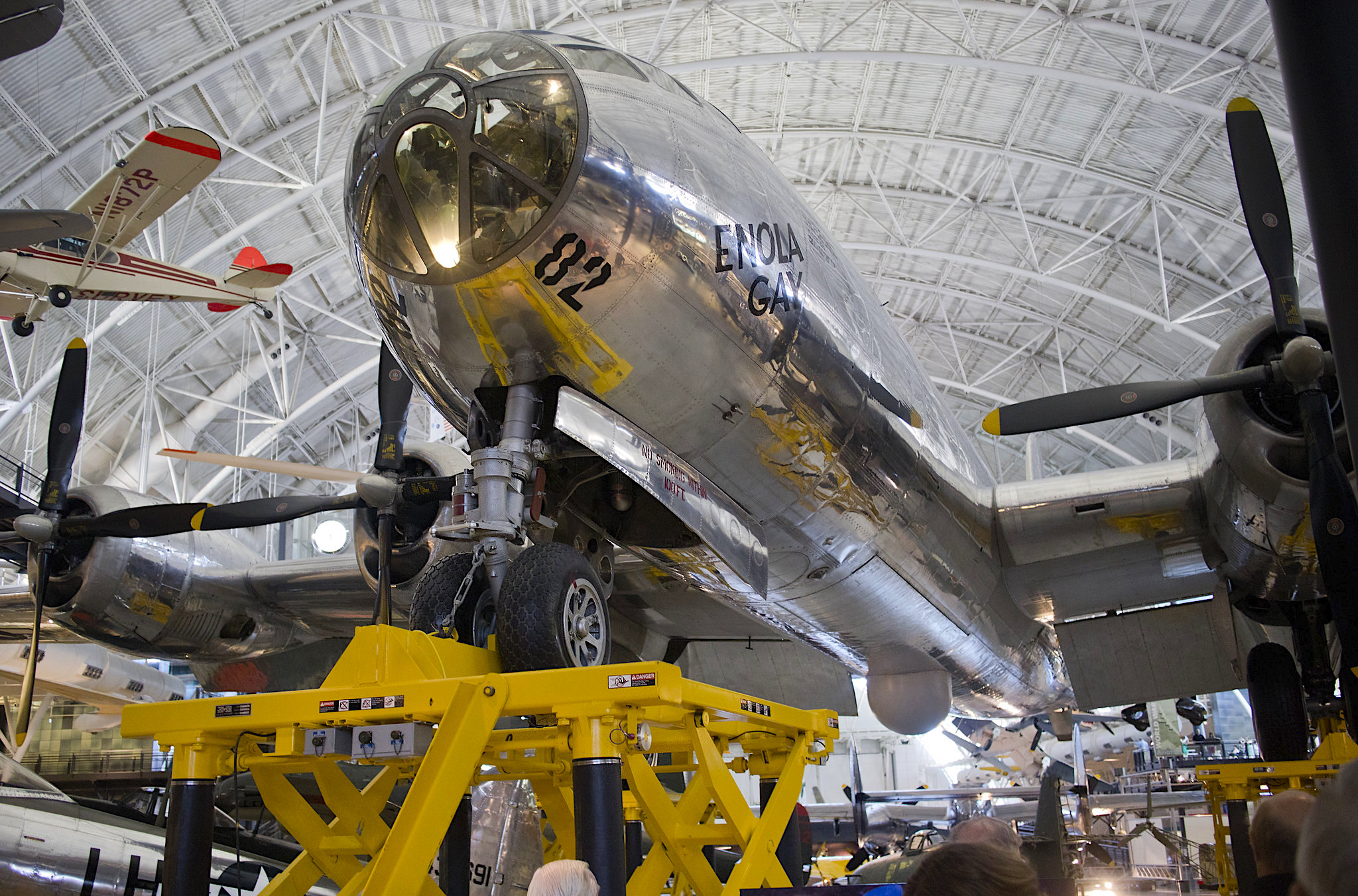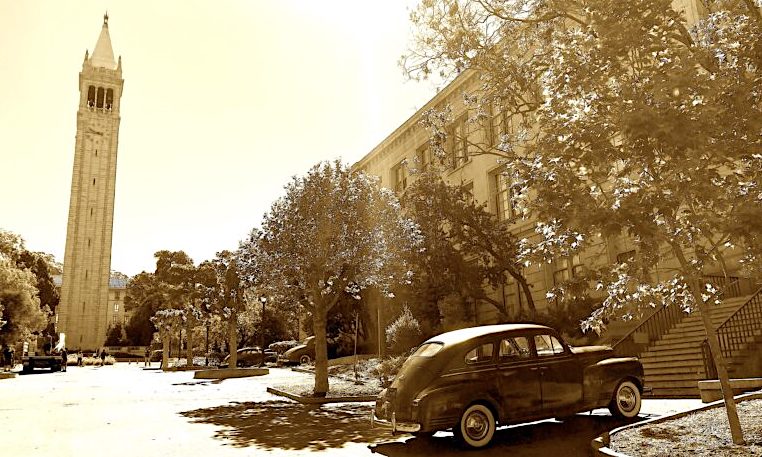Contrary to its public reputation, Tony Platt says the campus where he became an anti-war activist in the 1960s has always been one of academia’s premier beneficiaries of militarism.
By Tony Platt
Original to ScheerPost
This is an excerpt from Tony Platt’s new book “The Scandal of Cal: Land Grabs, White Supremacy, and Miseducation at UC Berkeley.” The book can be found here.
Cal Berkeley was cr eated in the 1860s-1870 and for its first 50 years was the only full-scale campus of the University of California that today includes 10 sites. Contrary to its public reputation, the campus where I first became an anti-war activist in the 1960s has always been one of academia’s premier beneficiaries of militarism — from the genocide of California Tribes and invasion of Mexico in the 19th century, to its contemporary role in co-managing three of the country’s leading nuclear weapons research facilities.
eated in the 1860s-1870 and for its first 50 years was the only full-scale campus of the University of California that today includes 10 sites. Contrary to its public reputation, the campus where I first became an anti-war activist in the 1960s has always been one of academia’s premier beneficiaries of militarism — from the genocide of California Tribes and invasion of Mexico in the 19th century, to its contemporary role in co-managing three of the country’s leading nuclear weapons research facilities.
It is not surprising, then, that the University of California, Berkeley — known locally as “Cal” and worldwide as “Berkeley” – welcomed Oppenheimer’s director Christopher Nolan and a large film crew to the campus in June 2022. “A major Hollywood studio sent UC Berkeley back to the 1940s,” reported the office of public affairs. “Dozens of vehicles trucked in extras and set dressing, including an incredible amount of potted plants and trees to cover up modern additions like bike racks and disabled parking signs.”
While the movie and subsequent publicity focuses primarily on the individual actions and angst of a Great But Troubled Man, too little attention has been paid to how a leading public university participated in creating a weapon of mass destruction that changed the means of warfare forever.
When the film was released, a display case in the physics building showcased an ad for the movie. A physics professor eulogized Oppenheimer as a “charismatic leader” who elevated the department into one of the top programs in the world. “Oppenheimer is a very important figure in world history,” added a retired Cal history professor.
There’s a long precedent for this kind of uncritical collaboration with the military.
By the early 20th century, some one thousand student cadets were drilling on the Berkeley campus, organized as a regiment with a marching band that paraded in blackface on special occasions. During World War I, the university turned over grounds, buildings, and equipment to the War Department; required students in the German department to sign a loyalty oath; and contracted with the U.S. Army to train 3,000 cadet pilots.
 “One could summon up images of West Point by just looking out on the Berkeley campus,” recalled a professor about his experience teaching at Cal in the late 1930s.
“One could summon up images of West Point by just looking out on the Berkeley campus,” recalled a professor about his experience teaching at Cal in the late 1930s.
By the time that the United States entered World War II in late 1941, the university had turned over its arsenal of knowledge to the government by providing research, technical support and officer training, as well as living quarters, to army and navy personnel. In 1944, about one quarter of all male students were involved with the navy.
More significantly, the university formally and secretly committed its scientific knowhow to national offense.
Shortly after the attack on Pearl Harbor, the federal government funded physicist Ernest Lawrence’s team to develop a new kind of weapons system. At its peak, Berkeley’s Radiation Laboratory employed 1,250 staff at a cost of about half million dollars per month. In the summer of 1942, a group of scientists, led by J. Robert Oppenheimer who had worked at Berkeley since 1929, met regularly in LeConte Hall (named in honor of professors who had helped to arm the Confederacy and remained lifelong white supremacists) where they prepared the first blueprint of the atomic bomb and discussed the possibility of creating a thermonuclear bomb.
In 1942, the University of California and the US Department of Energy jointly selected a site in New Mexico to locate the Los Alamos National Laboratory where the Manhattan Project designed and developed the perversely named “Little Boy” and “Fat Man” bombs that killed an estimated 200,000 civilians and left devastated survivors with long-term health issues.
What the University of California regarded as fifty-four thousand acres of “mostly uninhabited” land appropriated for the Lab was, according to Tewa Women United, an important place called Tsankawi that was once an Indigenous homeland on the Parajito Plateau. The Manhattan Project prohibited Native Americans from even visiting their burial sites.
Oppenheimer-the-biopic has nothing to say about Cal Berkeley-the-institution that received massive federal funds to do research on the atomic bomb and partnered with the US, government to appropriate ancestral lands in New Mexico. In addition to running the Los Alamos National Laboratory, the University of California also governed a town of several thousand people that housed the families of scientists and staff.
Oppenheimer Represented the University

Oppenheimer at the Guest Lodge, Oak Ridge, 1946. (Ed Westcott, DOE, Public domain, Wikimedia Commons)
Robert Oppenheimer represented the university, not just himself, when the Lab participated in dangerous scientific practices, such as the dumping of millions of gallons of radioactive waste into New Mexico’s Puerco River; and withholding from colleagues and the public information about a long history of risk-taking and radiation exposure that killed and injured Los Alamos staff.
Oppenheimer “does not explore in any depth the costs of deciding to test the bomb in a place where my family and many others had lived for generations,” writes Tina Cordova, co-founder of the Tularosa Basin Downwinders Consortium. Her organization has documented “eight decades of loss of life and health that was a consequence of the development and testing of the atomic bomb.”
Robert Oppenheimer represented the university, not just himself, when he helped to select Hiroshima as the best site to demonstrate the bomb’s “effective damage,” knowing that its explosive yield of about 15,000 tons of TNT would kill at least 20,000 civilians if exploded in the air. When asked after the war if he had any regrets, given that he significantly undercounted the number of dead, he replied: “I did my job which was the job I was supposed to do.”
The University of California’s reluctance to reckon with its culpability in the Manhattan Project is replicated in the Berkeley campus’ commemorative culture of selective remembering and planned obliviousness.
Donate to CN’s Fall Fund Drive
It is not only bike racks and parking signage that have been covered up.
A plaque in the physics building recognizes Oppenheimer for creating “the greatest school of theoretical physics the United States has ever known,” but says nothing about the university’s direct role in the vaporization of thousands of women, children, and elderly in Hiroshima and Nagasaki.
Another plaque at the entrance to the university that honors Japanese American faculty and students does not mention the 500 Japanese American students expelled by the University of California in 1942 in compliance with President Roosevelt’s Executive Order 9066.
Similarly, a recent exhibition at Cal Berkeley on “the incarceration of Japanese Americans” during World War II evades the university’s complicity in policies that imprisoned thousands without trial for crimes they did not commit.

Boeing B-29 Superfortress “Enola Gay,” which dropped the bomb on Hiroshima, on display at the National Air and Space Museum – Smithsonian Institution Udvar-Hazy Center Dulles, Virginia. (C. Watts/Wikimedia Commons)
The University of California has formally administered but not educationally oversighted a public museum in Los Alamos (now known as the Bradbury Science Museum) since 1954 and its magazine (The Atom) since 1964. It provides an imprimatur of academic legitimacy while delegating all curatorial and editorial decisions to a museum that functions as a public relations conduit for the military. “I’ve never heard of U.C. faculty being involved in any Bradbury exhibit development,” the current director of the museum told me.
Cal Berkeley had a rare opportunity to be involved, albeit indirectly, in creating a national discussion about the decision to experiment with atomic weapons in Japan when Michael Heyman, a former Berkeley law professor (1959-74) and chancellor (1980-1990) was appointed the secretary (namely, chief executive) of the Smithsonian National Museum.
Heyman initially supported an exhibition at the National Air and Space Museum that would at least complicate the prevailing jingoistic narrative. The initial script included both the fuselage of the Enola Gay and a lunch box filled with carbonized rice and peas — all that parents could find remaining of their daughter. Under political pressure, Heyman cancelled the exhibition and replaced it with a celebration of the plane that dropped the bomb.
A university that promotes itself as a bastion of free speech and incubator of social justice has become too accustomed to treating its own origins as a Hollywood script and sidestepping controversial issues that might interfere with an inspirational narrative of the past.
Institutional silence is habit-forming.
If Cal Berkeley is seriously committed, as its brand proclaims, to becoming “one of world’s great public universities, asking questions and improving the world,” it needs to put its “brightest minds” to work on illuminating its own history.
Tony Platt is a distinguished affiliated scholar at the Center for the Study of Law and Society, UC Berkeley. He has been associated with Cal Berkeley as a graduate student, assistant professor and researcher since 1963. This essay is adapted from his latest book, The Scandal of Cal: Land Grabs, White Supremacy, and Miseducation at UC Berkeley, published by Heyday on August 29, 2023.
This article is from ScheerPost.com.
The views expressed are solely those of the author and may or may not reflect those of Consortium News.
Donate to CN’s
Fall Fund Drive




Harry Truman knew the Japan was going to surrender—but the little man who was the sad choice that FDR chose—was a sad, and incompetent man who did not have to murder all those civilians. No reason to bomb either city as they were not military cities.
Apparently America likes to sneak up and bomb and murder other humans into oblivion. Yes yes, silly me, as Bush did the same thing with his,”shock and Awe,” early morning oblivion of humans plan for Iraq. A plan that had no reality except for offing Saddam. Truthiness is lacking a lot in all levels of America’s government.
I read the book, “Hiroshima,” as a senior in high school. That’s when I learned early on that my government was
composed of many scary and power seeking humans—all of who seemed to lack any humanity. : (.
How did the staff of the university behave during the McCarthy purges?
The banality of evil rears its ugly head yet again. Just doing my job doesn’t absolve the person making that claim of culpability in crimes against humanity. When will that lesson sink in?
Easy for you to say. The Manhattan Project was a response to the physics and war of the time. Germany and its allies were in the process of devouring Europe and the Far East and Germany (plus several of the countries it had already invaded) had available many of the best qualified nuclear physicists in the world and was known to be working on fission weapons.
So an initial impetus for the Manhattan Project was a letter sent by Albert Einstein and Leo Szilard in August, 1939, to FDR warning that extremely powerful fission bombs were likely possible to create in the near future and that Germany might well be engaged in such an effort. A few months later further analysis by a couple of European physicists indicated that such bombs might be made relatively small and portable and that the only obvious deterrent to their use might well be possession of similar weapons by the country potentially under attack.
So that genie was about to be released from its bottle by anyone who had the resources and willingness to summon it, and there would have been several in the context of a world-wide war who would have done so.
You seem to have chosen Oppenheimer as your culprit when in fact what he accomplished was what seemed to be to create the only deterrent to prevent the Axis powers from taking over the world – hardly the crime against humanity that you described. Now if you want to find legitimate war criminals you should look to those who decided to USE the result to help THEM take over the world: Harry Truman, the MIC, etc. (the firebombing of Dresden being yet another black eye for many such). Many of the scientists who worked on the project felt (and stated) that it should have been used only to create a demonstration to end the war.
The author does point out Berkeley’s dubiously uncritical relationship with said MIC after the fact, which is worthy of note.
I think you are ignoring two things:
(1) the bomb project continued AFTER Germany had already surrendered, and no threat remained. There was no longer any excuse that it was needed as a deterrent.
(2) Unlike some others Oppenheimer did NOT argue against using the bomb on human beings when he could have done so. In fact, according to the article, he helped to select the target! How then can you exonerate him, while condeming Truman etc as criminals? (There were also scientists who on principle refused to participate in the project at all. If I’m not mistaken, one of them was Max Born, a founder of quantum theory.)
A devestating and revealing put-down of a highly-renowned university, surprisingly, by a competent associated faculty of the university itself ! Wow, what an unexpected expose of the alleged elaborate cover-up involved. Someone like the author should also similarly expose the real motive for nuclear targeting, also surprisingly, the Catholic Church in the Japanese city, perplexingly by “christian” bombers too. What could possibly be the real reason here ?